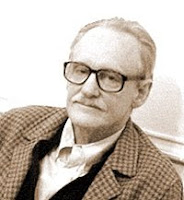Bauhaus Art : Arts and Crafts

By Andrew Milkowsky

Very cool media presentation from the New Yorker magazine, it deals with the new art exhibition at the MOMA with retrospective of works of Bauhaus (first originated in pre war Germany and it deals with how artists then felt and responded to the emerging impact of technology on every day life and attitudes..., in a way,... they predicted lot that followed in our century, Today Bauhaus influance art can be seen all around is in every day objects, building, furniture etc, but in my opionin Bauhaus goes much further than this. it really reflects elaborate and non trivial symbiosis between life art and technology...
Arts and Crafts
- November 16, 2009
- This week in the magazine, Peter Schjeldahl writes about “Bauhaus 1919-1933: Workshops for Modernity,” a retrospective at the Museum of Modern Art. In this audio slide show, Schjeldahl discusses the variety of works that emerged from the German art and design school as well as his ambivalence about the Bauhaus style.
Start with Chris Ware, the thirty-seven-year-old Chicagoan Picasso / Braque and young Eliot of graphic novels, whose “Jimmy Corrigan: The Smartest Kid on Earth” (2000, Pantheon) is, besides being viciously depressing, the first formal masterpiece of a medium that he has proved to be unexpectedly complex and fertile. Set aside, for now, the graphic novelists you probably most like, if you like only a few: Art Spiegelman, Marjane Satrapi, Daniel Clowes. Their peculiar literary qualities are distracting. The same goes for Robert Crumb, for whom there is the added problem of a historical significance: he is the father of art comics. Keep lightly in mind the ever-teeming regions of genre: superhero, action, horror, goth-girl. Give a respectful but wide berth to Japanese manga, which occupy most of the shelf space allotted to graphic novels in bookstores, their bindings as uniform as lined-up vials of generic, obviously addictive pharmaceuticals.

 http://www.facebook.com/l.php?u=http%253A%252F%252Fwww.newyorker.com%252Fonline%252Fmultimedia%252F2009%252F11%252F16%252F091116_audioslideshow_bauhaus%252F%253Fxrail&h=38f20ae93eaf6986acbcd5b6b22293bb&ref=nf
http://www.facebook.com/l.php?u=http%253A%252F%252Fwww.newyorker.com%252Fonline%252Fmultimedia%252F2009%252F11%252F16%252F091116_audioslideshow_bauhaus%252F%253Fxrail&h=38f20ae93eaf6986acbcd5b6b22293bb&ref=nf
Comments